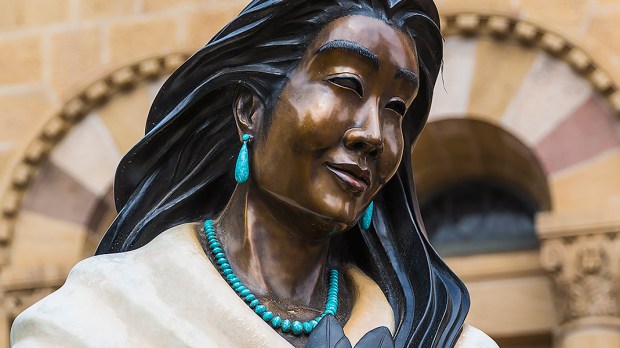St. Kateri Tekakwitha was a holy and devout young woman, who wasn’t always understood by her native tribe. She was among the few who embraced the Christian faith and tried to live a life of purity.
Kateri died at the young age of 24, but her influence only grew after her death. According to the book The Life and Times of Kateri Tekakwitha by Ellen Hardin Walworth, “Pictures of Kateri were painted by Chauchetiere shortly after her death, and were distributed in many directions. They were first engraved and sent to Europe by order of Madame de Champigny in the year 1695…[where she was] to be held up as a model for the Christians of Europe. She had indeed lived as a light in the wilderness, and was looked upon by all who knew her as a lily of purity and star of faith.”
However, this was only part of how her legacy grew, as those in her own village were quick to follow her example.
What served far more than any pictorial representation ever made, to keep her saintly memory before the people of her own village, was the formation of Kateri’s Band, or Les Sceurs de Catherine, as they were called. These were young Indian girls whom Therese Tegaiaguenta banded together after Kateri’s death, and incited to imitate the virtues of her friend, who, as she firmly believed, was still loving her and helping her in heaven, according to her promise.
Additionally, she also influenced “a certain chief called Ignatius the Iroquois. He had grown up under the shadow of Tekakwitha’s cross, and after living for a time among his new friends the Kalispel people [in Montana], who gained from him and his comrades a favorable opinion of Christianity, he did not hesitate to undertake a dangerous journey across the great plains of the United States in order to obtain for them a missionary.”
This chief’s efforts to find a missionary priest, who would then spread Christianity among this people in Montana, can be traced to Kateri’s prayerful example.
Kateri became the first Native American to be canonized a saint and continues to inspire others. For example, Nicholas W. Black Elk, a 19th-century Lakota catechist, was one of the people who signed a petition to canonize Kateri.
Furthermore, according to the Diocese of Rapid City, “after her canonization Black Elk’s eldest grandson, George Looks Twice, met Mark Thiel, of Marquette University Raynor Memorial Libraries, (and archivist for the Tekakwitha Conference and the Bureau of Catholic Indian Missions). He asked how to begin a cause for his grandfather.” Black Elk is now on the road to canonization as well.
In the end, all it took was the quiet example of a young woman to change the hearts of many. Among all the methods of evangelization that the missionaries used, the example of Kateri’s life was the most effective.

Read more:
Did you know as many as 25% of Native Americans today are Catholic?

Read more:
New shrine in New Mexico will be a spiritual destination featuring Native American saint

